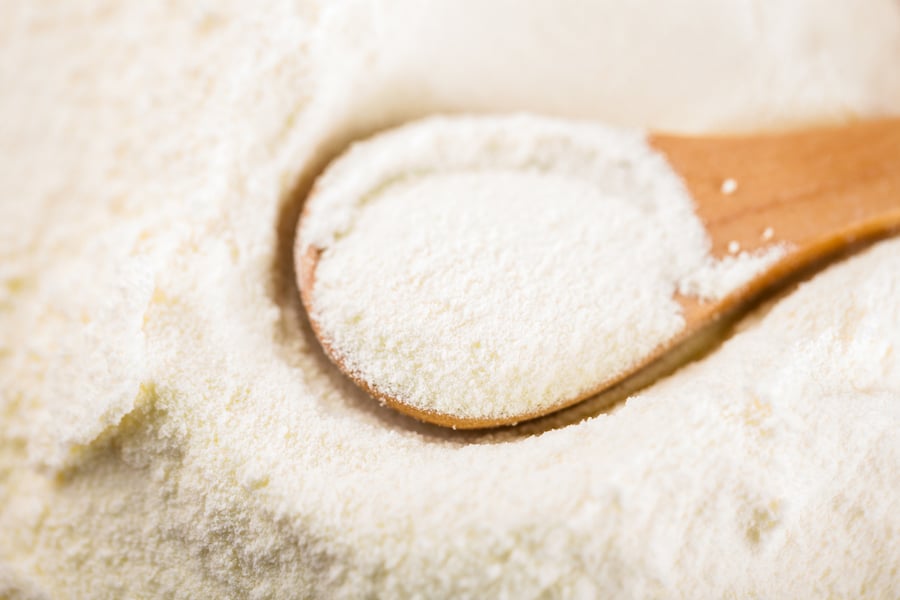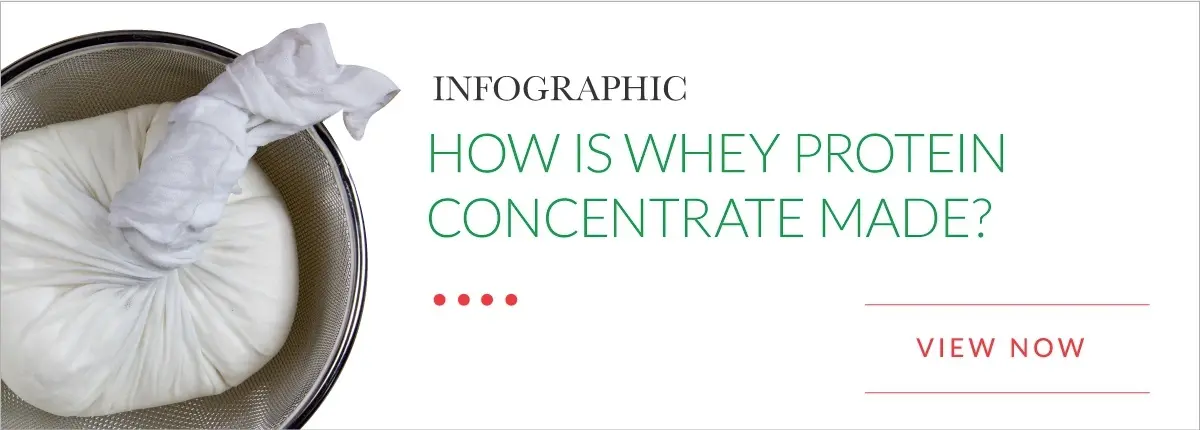
In today’s health-conscious society, one of the greatest influences on consumer buying decisions is arguably a food product’s label. When shopping for food, more than three in four (77%) U.S. consumers say they read the labels. Alarmingly, nearly half of Americans (44%) don’t necessarily trust the health claims being made on them!
The presence of artificial fillers and preservatives along with chemically modified ingredients often conflicts with label claims and leads many consumers to reach for another product containing only familiar, natural ingredients.
While whey protein ingredients in some products may sound familiar to consumers, that doesn’t mean they’re always all-natural, causing confusion. For example, commodity whey proteins often go through various chemical modifications. This is especially true of standalone products like commodity whey protein isolate, or fillers that focus merely on maintaining protein levels, such as those used in the sports nutrition industry.
What’s the Difference Between Commodity Whey Protein Concentrate and Functional WPC?
What Is Whey Protein Used for in Food Applications?
There are a lot of ingredients on the “no-no list” that can be used to modify texture, build viscosity and add flavor in different food products. These ingredients have fallen out of favor due to consumer and market demands for clean labels.
Sometimes you’ll find commodity whey proteins used in food applications to replace nonfat dry milk (NFDM). However, the chemical modifications they go through often make them unsuitable as a replacement for other dairy products where rich textures and a creamy mouthfeel are required. As a result of their chemical modification, they also cannot be labeled as “all-natural.”
Ensuring the structure and functionality of whey protein intended for use in food manufacturing — such as water-holding capabilities and durability under high-shear or extreme temperatures — is also a critical aspect of achieving desirable outcomes. Those types of results simply cannot be achieved with commodity whey protein products.
However, the use of functional whey protein products that are not chemically modified can achieve nearly identical tastes, textures and aromas when partially replacing heavy cream, cream cheese and other fresh dairy.
The variety of functional whey protein concentrate food applications is vast, including soups, sauces, spreads, salad dressings, fillings, frozen confections, desserts and anything that requires a creamy texture.
A Suitable, All-Natural Whey Protein Concentrate
Unlike commodity ingredients, Grande Bravo® Functional Whey Protein from Grande Custom Ingredients Group does not show up on the “no-no list.” This innovative ingredient stands out from commodity products in that it doesn’t undergo any chemical modifications.
Similar to tomato paste or granulated sugar which are concentrated forms of their fresh counterparts and experience a much longer shelf life, Grande Bravo is produced using similar processes to maintain its all-natural properties. When used as an alternative to premium dairy, it can provide the same rich, creamy texture and outstanding flavor without the added costs, refrigeration requirements and other drawbacks of using fresh ingredients. Better nutrition is an added bonus.
Grande Bravo Functional Whey Protein is made from white Italian cheese and is put through a proprietary manufacturing process with zero chemical modifications.
Commodity products are quite different. For example, WPC34 — or other higher protein-level whey products — doesn’t have the functional water-holding capabilities that Grande Bravo does. The ability to hold water is what allows Grande Bravo to partially replace other high-fat dairy ingredients and be used as a tool to optimize costs versus just increasing protein.
Commodity WPC34, which can come from many different types of cheese, is primarily used for protein fortification and as a filler in food products, and as a replacement for nonfat dry milk in many formulations.
Our Grande Bravo product can be used much differently and can be a major go-to ingredient in a food formulator’s toolbox. It can be used broadly within food systems with the confidence that it will perform.
A Whey to Avoid Chemically Modified Ingredients
In short, Grande Bravo Functional Whey Protein Concentrates are very different from commodity whey proteins. To learn more about its clean-label properties and how it is made, download our infographic below.
Consider Grande Bravo to reduce the use of high-fat, high-cost premium dairy in your applications. Reach out to the food scientists at Grande to talk more and tackle your toughest formulation challenge today.


.webp?width=350&height=235&name=Blog_Label-900x600%20(1).webp)


